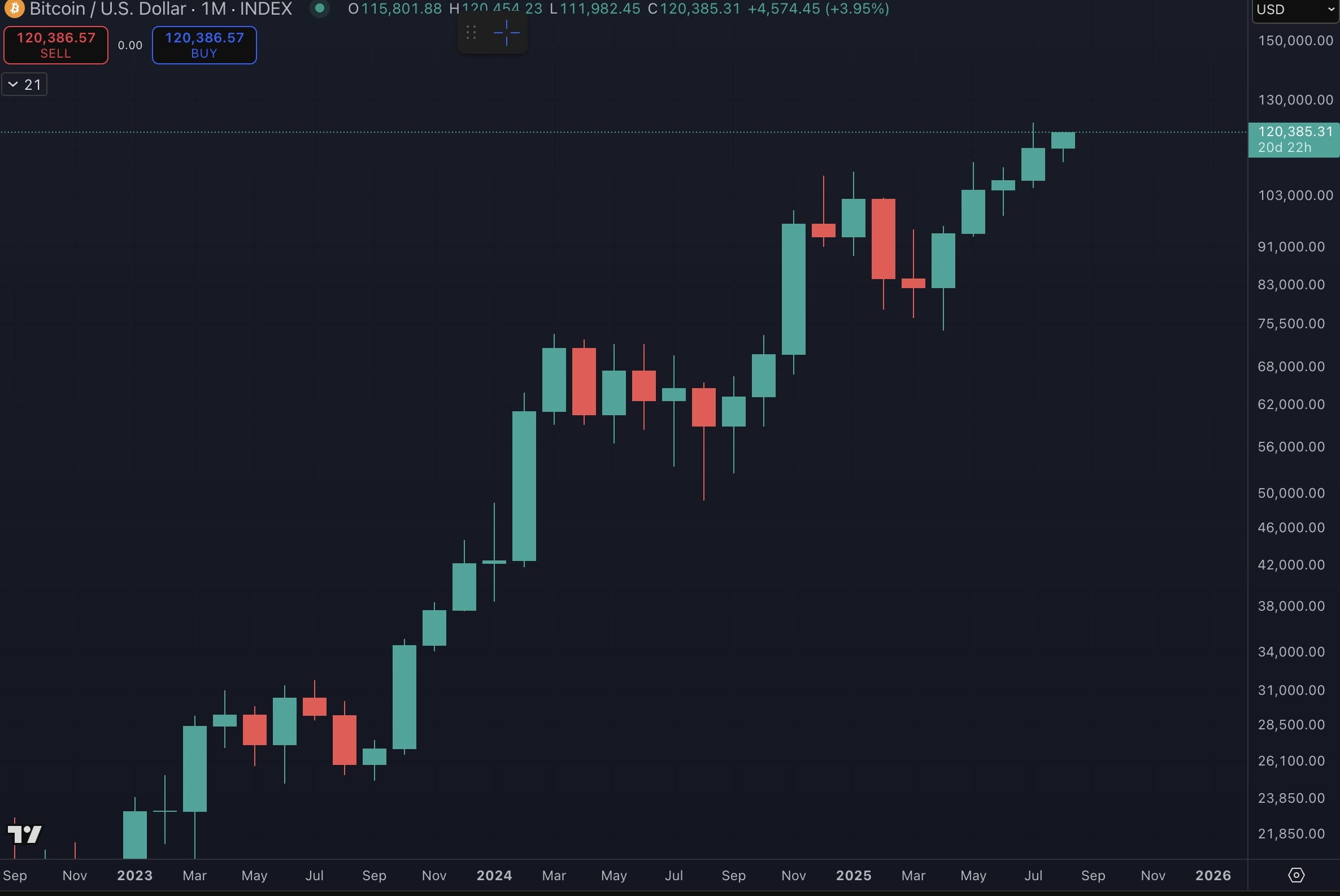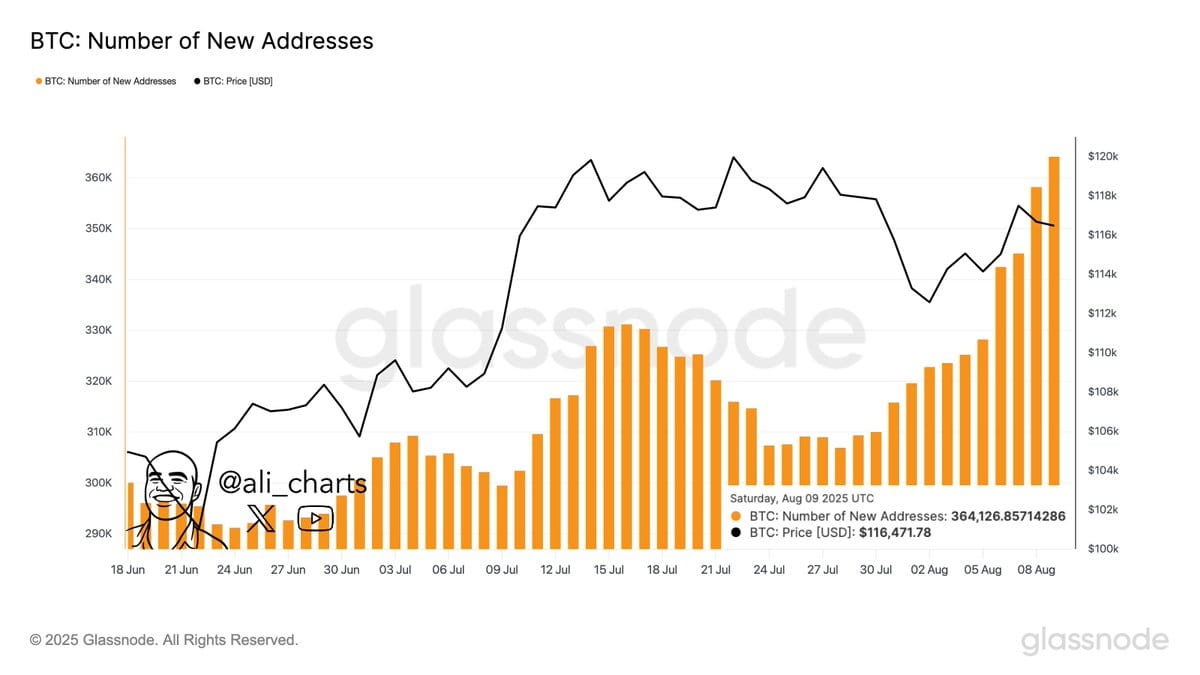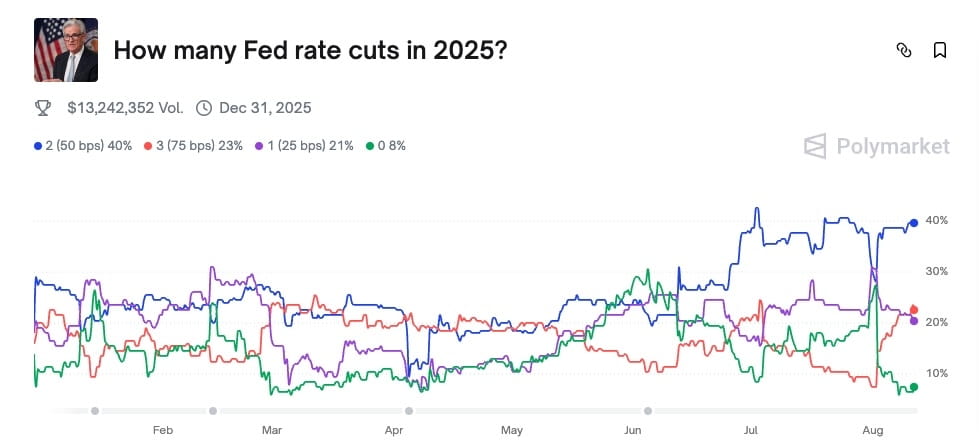Latest news on Bitcoin: BTC price has risen by 3.6% in the past 24 hours, breaking the $122,000 mark, with the potential to reach a historical high before the U.S. CPI and PPI data is released this week. Given that 2025 is a halving year, market analysts expect a strong rebound in August and the fourth quarter, consistent with historical trends. Macroeconomists also believe that inflation will rise further in July, driven by the effects of Trump’s tariffs. Therefore, in the current inflationary market environment, BTC is becoming a safe haven.
As inflation concerns escalate ahead of the U.S. Consumer Price Index release, Bitcoin performs strongly.
BTC has formed a strong bullish candlestick, rising over 3.5% in the past 24 hours, with the potential to break the previous historical high of $123,000. The recent rise came after BTC fell below $115,000 last week, with bulls gaining momentum once again. With the golden cross pattern reappearing on the Bitcoin chart, analysts are confident that BTC could rise to $130,000 or even higher.
Renowned cryptocurrency analyst Benjamin Cowen stated that based on historical trends from previous years, BTC is expected to close higher in August. With two weeks remaining and key inflation data about to be released, BTC investors will be on high alert.
 Cryptocurrency analyst Benjamin Cowen emphasized the recurring trend of Bitcoin prices after halvings. Cowen noted that BTC follows a similar pattern every year after halvings, with prices often rising in July and August. He further added that we may see some pullback in September, followed by a new market cycle peak in the fourth quarter.
Cryptocurrency analyst Benjamin Cowen emphasized the recurring trend of Bitcoin prices after halvings. Cowen noted that BTC follows a similar pattern every year after halvings, with prices often rising in July and August. He further added that we may see some pullback in September, followed by a new market cycle peak in the fourth quarter.
Additionally, on-chain data shows a strong increase in the number of new Bitcoin addresses. According to cryptocurrency analyst Ali Martinez, the total number of new BTC addresses reached 364,126 daily, setting a record high for the past year.
 U.S. CPI and PPI data are under close watch as inflationary pressures may persist.
U.S. CPI and PPI data are under close watch as inflationary pressures may persist.
According to market forecasts, the U.S. Consumer Price Index may rise by 0.3% in July, indicating that inflationary pressures may persist. The continuously rising tariffs imposed by Trump have begun to affect consumer prices in areas such as household goods and leisure products. Given the revision of U.S. employment data and the uncertainty of labor market strength, many companies are seeking ways to mitigate tariff burdens on price-sensitive customers.
At the FOMC meeting in September, market expectations for a Federal Reserve rate cut are heating up. According to Polymarket data, the highest expected weight is for two rate cuts (a total of 50 basis points), reaching 40%. However, since the revision of employment data, expectations for three rate cuts (a total of 75 basis points) have surged from 8% to over 23% in the past week.


